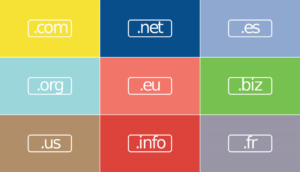Germany’s government created quite a buzz when it announced that recreational cannabis would be legalized during the current term. Does this mean that we’ll see recreational use of cannabis for adults becoming a common policy in Europe? It’s too soon to say.
After interviewing several active investors in cannabis-related startups, we learned that the regulatory and functional landscape in Europe is just as fragmented as it is in North America. Another important data point that connects both regions: the black market is a competitive factor. According to Europol, illicit spending on cannabis in the EU amounts to €9 billion each year.
However, things are moving on the legal side of the market — it appears medical cannabis still carries most of the momentum, and it is only accelerating. Around €354 million worth of unlicensed medical cannabis will be sold in Europe in 2022, according to market intelligence firm Prohibition Partners, and this number is expected to rise to around €2.3 billion by 2026.
Investments and M&A in the sector are also being spurred by Germany’s promised legislation.
“Our belief is that M&A will be front of mind for all legal cannabis operators. The difference in Europe is that there is opportunity for non-cannabis players to potentially get strategic and attempt to enter the market through an integration of cannabis as a CPG [consumer packaged good] or pharmaceutical-grade option,” said Todd Harrison, founding partner at CB1 Capital Management.
Also encouraging for producers and operators is the fact that medical cannabis isn’t verboten at a federal level across the EU, which lets companies legally sell their products across borders.
“This means that you can produce cannabis, for example, in Portugal, and sell to any EU country as long as you have export/import licenses. Hence, cross-border commerce in Europe is relatively fluid, meaning companies can scale relatively quickly if they know what they’re doing,” said David Bonnier, founding partner at Enexis AB.
We spoke with:
- Todd Harrison, founding partner and CIO, CB1 Capital Management
- Yoni Meyer, partner, Casa Verde Capital
- Viken Douzdjian, managing partner and co-founder, Argonautic Ventures
- David Bonnier, founding partner, Enexis AB
- Will Gibbs, principal, Octopus Ventures
- Oliver Lamb, co-founder and investment manager, Óskare Capital
- Leah Fletcher, founder and director, Arbutus Innovation Centre
- will.i.am, investor, Sanity Group
David Bonnier, founding partner, Enexis AB
What are some of the biggest challenges facing Europe’s cannabis industry right now?
Europe is largely a medical-only market right now. Unlike the U.S., medical cannabis in Europe is regulated as a medicine and falls under EU and national pharmaceutical regulatory systems.
As such, standards for production and distribution of medical cannabis are exceptionally high. Moreover, European doctors are generally more conservative and evidence-based. Therefore, it takes time to build the necessary infrastructure in order to get stakeholder buy-in.
Key challenges include (1) lack of education and buy-in from industry stakeholders such as physicians, research institutes, insurance companies, politicians, etc.; and (2) lack of downstream infrastructure such as research centers, specialized clinics, licensed wholesale distributors and manufacturers.
The good news is that since cannabis companies have to operate under pharmaceutical regulatory systems in Europe, we are seeing material accumulation of high-quality patient data.
While valuations are trending up, Germany’s exciting market developments still require business leaders to perform and scale. Viken Douzdjian, managing partner, Argonautic Ventures
Note that doctors in Europe can only prescribe a finished product to patients, unlike the U.S., where you only need a medical card. Patients must often follow up with doctors several times, which yields several valuable patient data points that can be used in real-world evidence studies.
As such, we believe Europe will most likely become a key leader on the research front for medical cannabis, which will further help lift the evidence base and general acceptance.
How are these issues informing your advice to your cannabis-related portfolio companies?
We are focused on companies that know how to navigate the European regulatory landscape and are filling key gaps in the market.
For example, we currently like the downstream part of the value chain, which has been underserved so far, including distribution companies, specialized clinics platforms, research and development centers, and companies that are accumulating patient data, which we believe will become very valuable over time. We also like ancillary businesses.
As in the U.S., legislation across Europe is fragmented but evolving. Are these situations comparable to you?
To an extent, albeit there are some key differences. Given that North America has already paved a pathway (starting in 1996 with medical cannabis in California, and again in 2012 with adult use in Colorado and Washington), legislation in Europe is accelerating at a faster pace.
While the Netherlands was first to legalize medical cannabis in Europe in 2003, the legalization wave really didn’t happen until much later, when Italy legalized, followed by Germany, Poland, the United Kingdom and many more. Currently, nearly 400 million Europeans now have legal access to medical cannabis in some form, which is more than in the U.S.
Also, Europe does not suffer from federal prohibition of medical cannabis like in the U.S. There is an EU-wide directive for production and distribution standards for medical cannabis products, which is interpreted by each country.
This means that you can produce cannabis, for example, in Portugal and sell to any EU country as long as you have export/import licenses. Hence, cross-border commerce in Europe is relatively fluid, meaning companies can scale relatively quickly if they know what they’re doing.
Which sector shows the most promise for growth in Europe this year: medical or recreational? Has the popularity of CBD products made investors more comfortable about recreational use?
While there is a lot of buzz around the use of cannabis by adults, it is still largely a non-existent market from a commercial standpoint. Malta has legalized (albeit it has a small population); the Netherlands is running a pilot program for legal production, which was previously illegal; Switzerland is running a commercial pilot program; and a few other countries have legalized home-grown cannabis for personal use.









